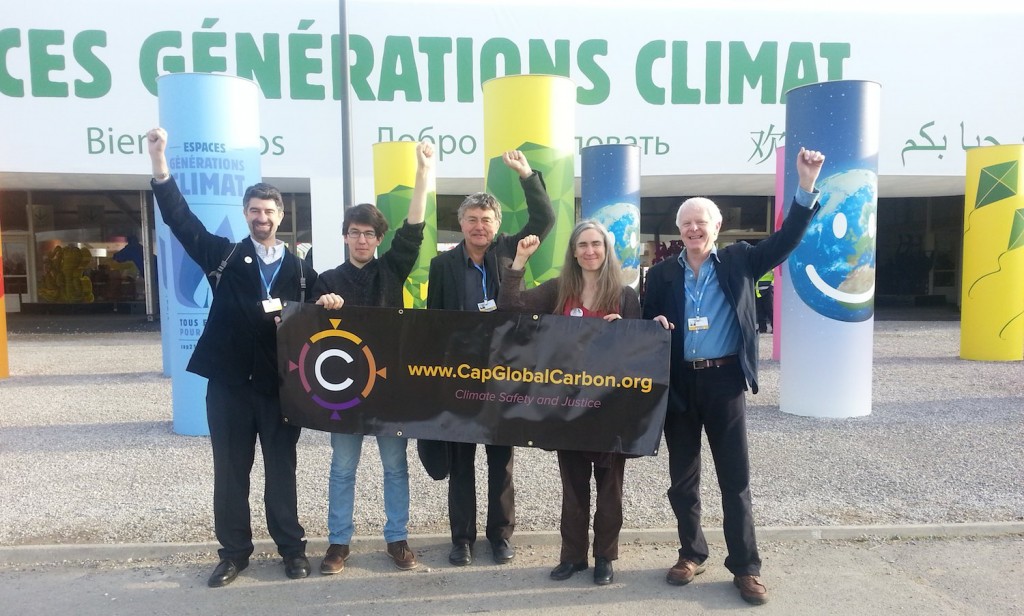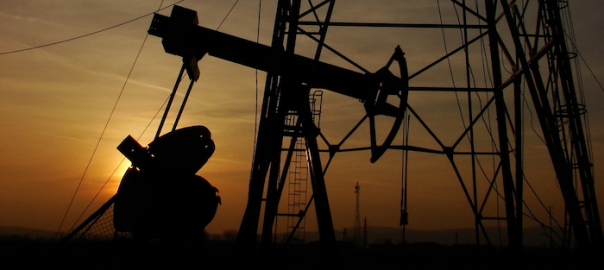Category Archives: Uncategorized
What should the Irish government do about carbon pricing?
Climate dividends and the yellow vests
The Good, the Bad, and the Ugly of the IPCC 1.5 degree report and the Nobel to Nordhaus
Submission to the European Commission on a strategy for long-term greenhouse gas reductions
Cap and Dividend bill introduced in U.S. Senate – a ray of hope regardless of its “political feasibility”
How it works
The explanation below, by Laurence Matthews, is taken from Feasta’s book Sharing for Survival: Restoring the Climate, the Commons and Society. You can read the whole chapter here.
CapGlobalCarbon is a global version of Cap and Share (C&S), which is a way of securely limiting the carbon dioxide (CO2) emissions from burning fossil fuels.
As the name implies, there are two parts to Cap and Share:
| Cap: | The total carbon emissions are limited (capped) in a simple, no-nonsense way. |
| Share: | The benefits, from the huge amounts of money involved, are shared equally. |
These principles are simple, but there are a number of ways of interpreting them, especially the ‘Share’. The principles are more important than the details, so let’s look first at the main principles themselves.
The Cap
The cap is a limit each year on overall, total CO2 emissions. This is set, in line with scientific advice, at a level which will bring concentrations of CO2 in the atmosphere down to a safe level. But how do we ensure this cap is met?
The ‘Cap’ in Cap and Share is ‘upstream’. A good way to explain this [2] is to think of watering a lawn with a hosepipe connected to a lawn sprinkler, with lots of small holes spraying water everywhere. If you wanted to save water, what would you do? One idea is to try to block up all the sprinkler holes one by one. But wouldn’t it be simpler to turn off the tap a bit?
It’s the same with fossil fuels, where the sprinkler holes correspond to the millions of houses, factories and vehicles ‘downstream’ (on the right-hand side of Figure 1), each emitting CO2 by burning these fuels. But corresponding to the tap (on the left-hand side of Figure 1) there are only a few primary fossil fuel suppliers (e.g. oil companies) who introduce fossil fuels into the economy – by importing them or extracting them from the ground.

So it’s easier to work ‘upstream’, on the left-hand side of Figure 1. The cap operates by requiring the fossil fuel suppliers to acquire permits. A permit for 1 tonne of CO2 entitles a fossil fuel supplier to introduce fossil fuel with that CO2 content – that is, the amount which will emit 1 tonne of CO2 when burnt. The number of permits issued equates to the desired cap. By controlling the supply of fossil fuels coming into the economy, we automatically control the emissions which occur when those fossil fuels are burnt somewhere down the line.
For imports of fossil fuels, the cap may best be applied at the point of entry to the country (port, pipeline); for domestic production the best place is likely to be the mine (for coal) or the refinery (for gas/oil). The details need to be sorted out, but will be able to make use of systems already in place for accounting and taxation purposes, and will be in any event much simpler than trying to account for everything downstream.

Now look at Figure 2. This shows the two halves of our carbon footprint (‘direct emissions’ and ‘indirect emissions’). Some fossil fuels are burnt by companies producing goods and services on our behalf – these are our ‘indirect emissions’ and form the upper line in Figure 2. The goods that reach us have these emissions ‘embedded’ in them. Meanwhile we also buy fossil fuels (such as petrol) directly and burn them ourselves – these are our ‘direct emissions’ and form the lower line in Figure 2. The permits are represented by the small rectangles. Direct and indirect emissions are both taken care of by the same system.
In other words, it doesn’t matter where the emissions take place (the emissions are indicated by flame symbols in Figure 2). We don’t need to monitor and measure emissions at all, because instead of focussing on the emissions, we are focussing on the fossil fuels themselves. This focus also makes clear the connection between controlling emissions and ‘keeping fossil fuels in the ground’.
(Elaborations to this simple basis for the cap are possible: for example, offsets might be allowed against sequestration using methods like scrubbers or biochar. But abuse of the ‘paying someone else to cut their emissions’ type of offset has to stop).
The Share
Next, the Share. In Figure 3, the curved arrows represent flows of money. The fossil fuel suppliers must buy the permits to cover the CO2 content of the fuel they supply. They will seek to recoup this cost by building it into the price of fuel. This mark-up then flows through the economy like a carbon tax, making carbon-intensive goods cost more. There is thus a flow of money from the end-consumers to the fossil fuel companies, represented by the upper curved arrow in Figure 3. This sounds like bad news for the consumer. But wait – the fossil fuel suppliers paid for their permits, so where did that money go? The trick is to share this money out, back to the people (the lower curved arrow in Figure 3), which compensates for the price rises.

There are two possible mechanisms for returning (‘recycling’ or ‘rebating’) the money to the population. In the version called Cap & Dividend in the USA – which is the version used in CapGlobalCarbon – permits are auctioned and the auction revenue distributed to the citizens on an equal per capita basis. Alternatively, under ‘classic’ C&S each adult receives free of charge (say, monthly or annually) a certificate for his or her share of the cap – that is, of the country’s carbon footprint. These certificates are then sold to the fossil fuel suppliers (through market intermediaries such as banks) and become the permits. Under ‘classic’ C&S people thus receive certificates instead of money, so that if they should wish to, they can retain (and destroy) a portion of their certificates – and thus are able to reduce the country’s carbon footprint by that amount.
That’s C&S in a nutshell. It’s simple and transparent; fair; cheap and fast to implement; positive and empowering; effective and efficient. The same principle could also apply to other greenhouse gases – in fact any other common resource such as a fishery could be incorporated: it is easy to maintain a cap using permits, auction these permits and distribute shares of the revenue to the population. This is a resonance with emerging so-called ‘commons thinking’.
Read more (from Sharing for Survival)

First steps towards CapGlobalCarbon: potential partner countries and useful programmes
In Memoriam: Robert Hutchison
The CapGlobalCarbon team is saddened by the death of our colleague and friend Robert Hutchison. We all share fond memories of attending the Paris COP21 conference where Robert impressed us with his personable and friendly style as he talked to delegates from all over the world about CapGlobalCarbon. His insights, drive to do good and support were of great value to us. Our condolences go out to his family.


Towards Climate Safety and Justice briefing report
This report summarises the outcomes from a two-day event on June 8 and 9 2016 that was organised by Feasta, Cultivate and Trócaire.
The event’s purpose was to provide a briefing on CapGlobalCarbon – a campaign organised by members of Feasta’s climate group – set it in the context of the commons, divestment and social justice, and generate ideas about how to implement it as part of a broader citizens’ movement for a fair and sustainable transition from fossil fuels.
Many new ideas were generated as a result of this event, and there was a strong focus on the practical which is very welcome. While challenges were acknowledged and discussed, emphasis was placed on the potential for CGC to build partnerships with a wide variety of organisations and promote its message.